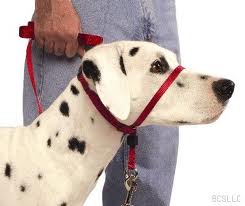Although the shock collar has become a widely used "dog training" tool throughout the United States and elsewhere, there are many other alternative training tools that do not involve causing pain.
Next month I will have a very in-depth article on shock collars and all the information you have ever wanted to know about them. But for this month's Trainer Tip, I would like to point out the many alternatives to using that very aversive method of training.
Just to be clear, I do not like shock collars (or E collars, or training collars, or any other name they go by). As a positive reinforcement trainer, I do NOT condone the use of these devices nor recommend them to anyone.
I like to look at it this way...
Think of your current job, whatever it is you do to make money. Whether or not you especially like your current job is not important. Think of positive reinforcement training versus shock collar training like this...
Would you rather go to work and work really hard to get rewarded?
OR would you rather go to work and work really hard so you don't get punished?
I personally would rather work hard at my job to get rewarded. If you have to work hard at a job to keep from getting punished, you probably won't keep that job for very long. Think about it. Say your job is trying to teach you something new, but instead of guiding you in the right direction and rewarding you when you figure it out, you are continuously shocked until you just figure it out, with no direction what-so-ever. Sound like something you would like to try? No? Then why would you consider this option for your dog?
Still think maybe it doesn't really hurt? Go to youtube.com and type in shock collars. You can watch people trying these "tools" on themselves from all over the world. They seem to think it hurts too! Check out this video of a shock collar experiment.
Many people forget that training takes time and consistency, this is true of any type of training, positive or otherwise. Knowing that, the e-collar option seems a little less appealing doesn't it?
So you might be thinking, well ok, I get what you're saying, but my dog is just so out of control. That is why the wonderful world of dog products is constantly coming out with better and more efficient training tools. And these tools do NOT cause your dog physical and mental pain and stress.
Have a dog that's hard to control on leash? No problem. Try one of these amazing tools to help!
Easy Walk Harness:
This is not a regular harness. A regular harness clips on the back of the dog; this is designed for pulling. The easy walk harness clips in the front, on the dog's chest. This actually helps teach a dog to NOT pull on the walk. When a dog pulls on the leash, he actually pulls himself around back towards the person holding the leash. This product is amazing. Not every tool is right for every dog, but I have personally seen this tool work wonders on many dogs. Keep in mind, this is a tool to use, this is not a substitute for training.
Head Collars:
There are many types of head collars. The most popular of these are the Gentle Leader (left) and the Halti (right). Think about a horse, it's a very large animal that well outweighs any human, yet we are able to control the animal by controlling the head. This is the same idea for dog head collars. These tools are especially helpful for dogs who lunge and snap at things.
(Also see Such Good Dog's previous post for more information.)

Praise:
Good boy! Good girl! Good Dog!
Praise is by far the best training tool available today, and it's FREE! As a positive reinforcement trainer, I always try to remind people to praise their dogs when they do something good. It's much better to mark good behavior than bad behavior. Again think of your job, it's good to know when you do something wrong so that you are able to fix it, or do it better the next time. But being noticed and rewarded for doing something right is much more important. The more we (and our dogs) are rewarded for doing something well, the more likely we are to that behavior again!
So every time your dog does what you are looking for, don't forget the "Good!" so he knows he did a good job. The more you praise and reward the behavior you want, the more your dog will give it to you!
Good dog!
{This post is part ONE of two. See post 2 of 2 on shock collars here.}






No comments:
Post a Comment